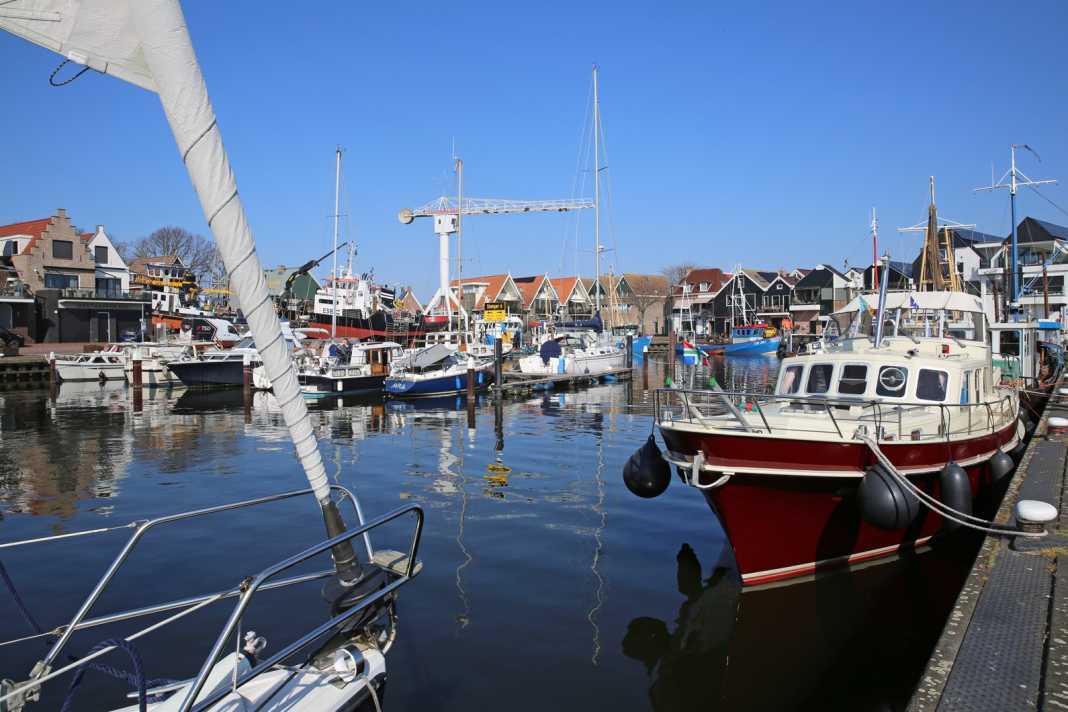Netherlands: Around the IJsselmeer and Markermeer - south and west coast






To the east of the IJsselmeer is Friesland, and to the south is the province of Flevoland. There lies the coast of the North-East Polder, which was drained between 1936 and 1942. As a result, two islands suddenly became mainland: Schokland, whose outline, completely surrounded by fields, can be recognised on aerial photographs and is now a UNESCO World Heritage Site. And Urk, whose lively municipal harbour has been preserved and is now a popular destination for sailors. From the red lighthouse, the view sweeps across the IJsselmeer, making it easy to imagine that you are still on an island.
Newly created and vanished islands
Interestingly, the two lost islands were replaced by two new ones: De Kreupel in the IJsselmeer and the Marker Wadden in the Markermeer. These areas serve as retreats for flora and fauna and at the same time offer recreational opportunities for visitors, especially sports skippers. The Marker Wadden are even equipped with dunes, a beach and a beach bar and show that man can shape nature.
From the Ketelmeer, the first marginal sea, you reach the Flevopolder. This is comparable in size to Berlin and is the largest artificial island in the world. The main town of Lelystad, which today has a population of around 80,000, was founded when the lake was drained in 1968 and is still relatively new.
Lelystad under the sign of the "Golden Age"
To give Lelystad a bit of history, there is the Bataviawerf - a place with a museum and shopping centre specialising in the construction of ships from the 17th century, the heyday of the Netherlands. The first project was a replica of the "Batavia" from 1628, which lies in the museum harbour.
The closest marina to the Batavialand Museum is Deko Marina Lelystad, north of the Houtribsluizen. Lelystad marks the eastern end of the Houtribdijk, which runs between the IJsselmeer and the Markermeer.
Transition from the IJsselmeer to the Markermeer
To the south-west lies the IJmeer, the last remnant of the Zuiderzee, with access to Amsterdam. It is about 20 nautical miles from the Houtrib- to the Oranjesluizen, which point the way to Amsterdam harbour. Marken, the last historic island of the Zuiderzee, lies on the Markermeer.
The best navigation destination here is not the Paard van Marken lighthouse, but the northern tip of the Bukdijk, which provides peace and quiet in the Gouwzee, a bay. The small harbour and the entire island are quiet and pleasant. Because Marken is connected to Noord-Holland by a causeway, it can be busy in summer. Original plans to drain the Gouwzee were fortunately not realised.
If these plans had been successful, Monnickendam and Volendam, including neighbouring Edam, would have lost much of their historical character. The Kaasmarkt in Edam is a major event in July and August and has been delighting tourists for centuries.
Old rivals: Hoorn and Enkhuizen
The next two towns on the west coast are linked by a long rivalry - Hoorn and Enkhuizen - even though they are now separated by the western end of the Houtribdijk. Both symbolise the Gouden Eeuw, the golden age in which the Netherlands rose to become a world economic power.
Hoorn became particularly important when the United East India Company established a business centre in the city, putting it on a par with Batavia, Nagasaki and Cape Town. In addition, the most famous and notorious cape in the world bears Hoorn's name.
Magnificent buildings, visible from afar from the water, still bear witness to this prosperous time, such as the Hoofdtoren in Hoorn and the Drommedaris at the harbour in Enkhuizen. The Naviduct Krabbersgat with its lock in the Houtribdijk is just under eleven nautical miles from the numerous harbours of Hoorn on the Markermeer. Once back in the IJsselmeer, Enkhuizen, where the Zuiderzee Museum is located, is now just off the port side.
Our tour could end in Medemblik's Middenhaven, the last town before the Afsluitdijk, alongside in the peaceful shade of tall trees. Now only the Stevinsluizen near Den Oever await - and the North Sea beyond. As always. When the Zuiderzee still existed and its taming was nothing more than a bold dream.
Nautical literature on the IJsselmeer
- Nautical literature: Cruising guide "Holland 2: The IJsselmeer and the northern provinces" by Jan Werner. Delius Klasing: 224 p., ISBN 978-3-667-12063-2, 39, 90 Euro.
- Manual "The IJsselmeer. With Noord-Holland, Randmeeren, Flevoland" by Manfred Fenzl. Edition Maritim: 224 p., ISBN 978-3-667-12212-4, 39, 90 Euro.
- Sport boat charts "NL3 NVCharts Nederland. IJsselmeer, Markermeer en Randmeren"NVCharts: Oversailer, district and detailed charts. Format: 32.4 x 44 cm, 64.99 euros.

